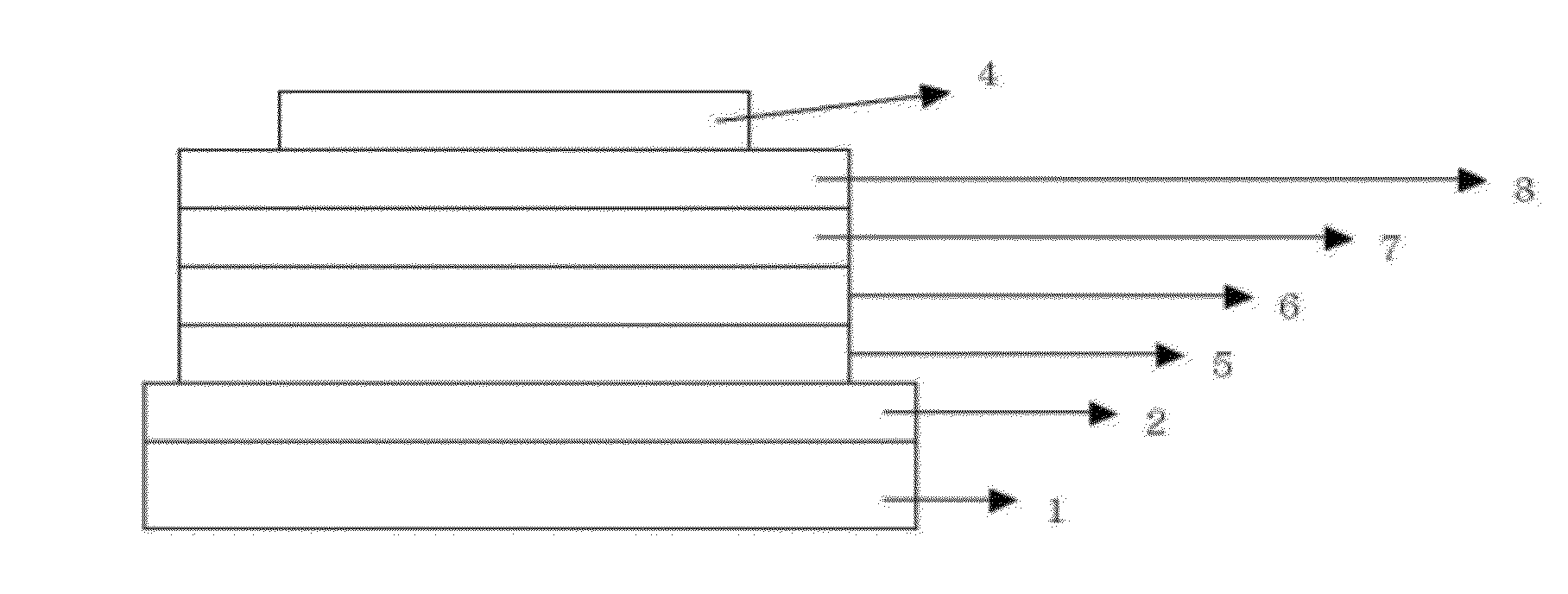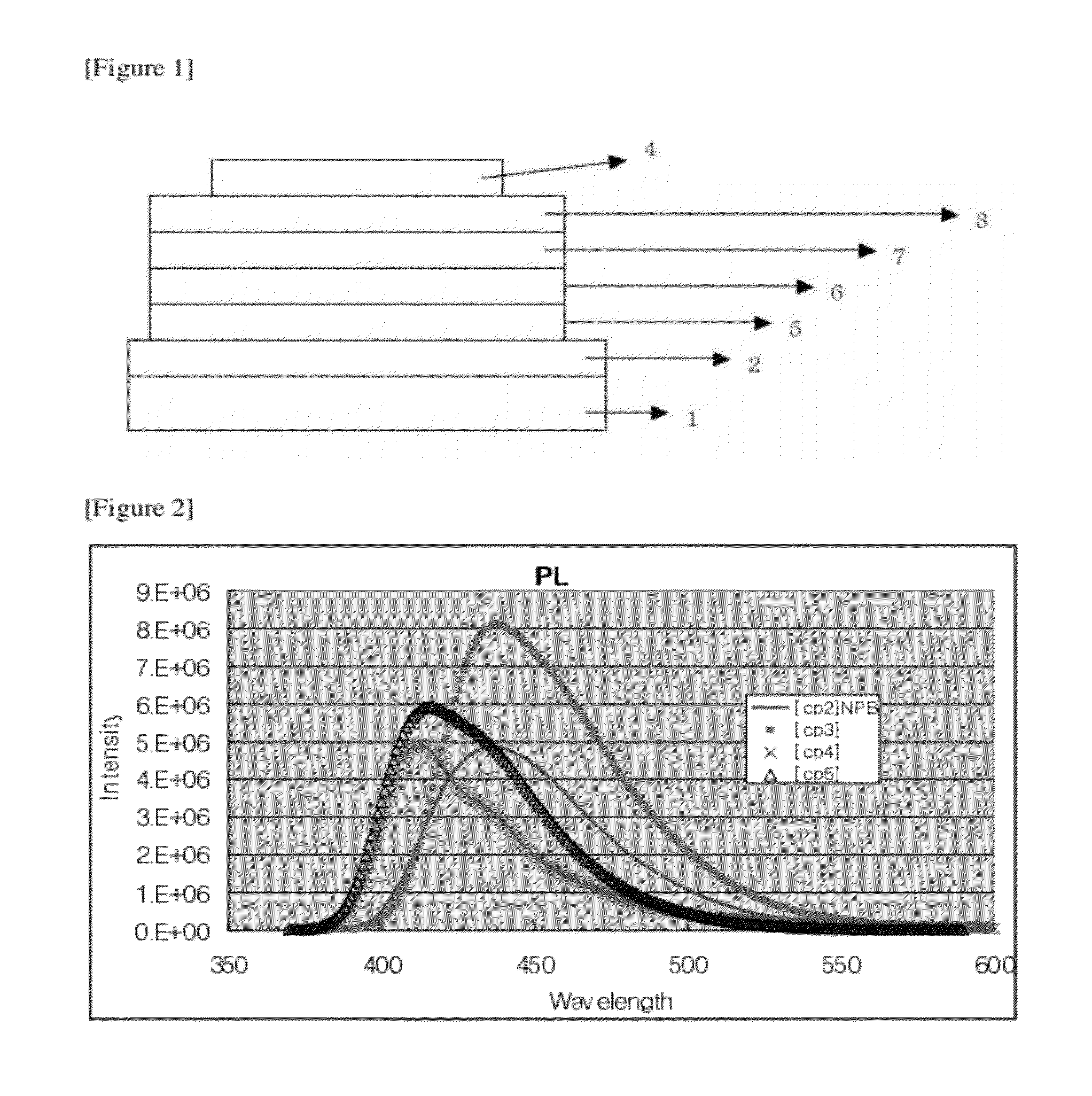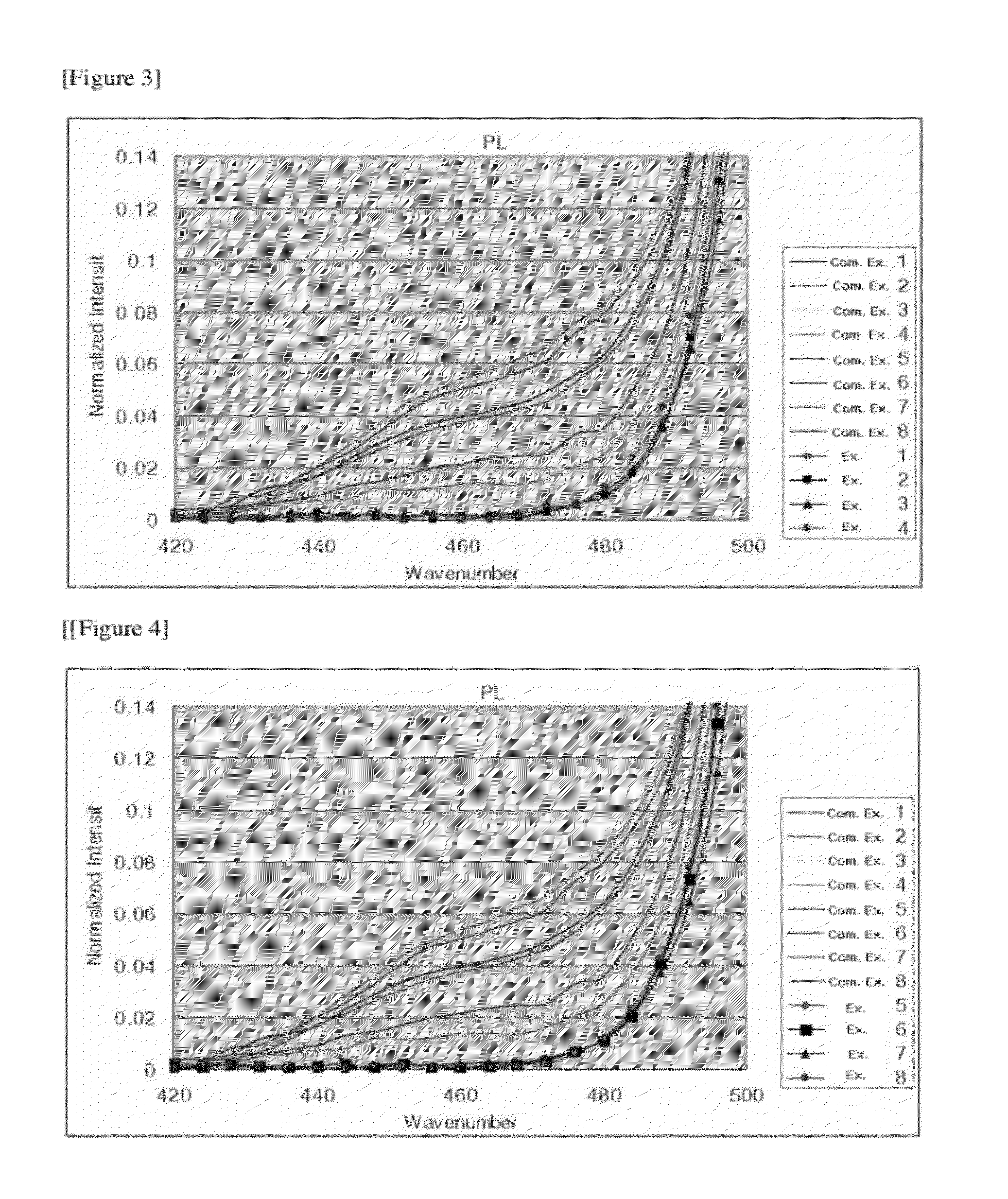Organic light emitting diode and manufacturing method thereof
- Summary
- Abstract
- Description
- Claims
- Application Information
AI Technical Summary
Benefits of technology
Problems solved by technology
Method used
Image
Examples
example 1
[0246]A transparent electrode (Indium Tin Oxide) was deposited as a hole injection electrode to a thickness of 100 nm on a glass substrate, and was subjected to oxygen plasma at a pressure of 30 mTorr and a power of 80 w for 30 sec. [cp1] was deposited to a thickness of 30 nm thereon by heating the compound [cp1] in vacuum. [cp2] which was NPB as a hole injection layer was deposited to a thickness of 100 nm thereon. [cp7] as a light emitting dopant was doped in an amount of 16% while [cp6] as a light emitting layer was deposited to a thickness of 30 nm thereon. Subsequently, an organic light emitting diode was manufactured by depositing [cp8], which is a part of Formula 1, as an electron transporting and injection layer to a thickness of 20 nm thereon, depositing LiF as an electron injection layer to a thickness of 1 nm thereon, and depositing Al as an electron injection electrode to a thickness of 150 nm thereon.
example 2
[0247]An organic light emitting diode was manufactured in the same manner as in Example 1, except that [cp3], which is a part of Formula 4, was used instead of [cp2] which was NPB as a hole transporting layer in Example 1.
example 3
[0248]An organic light emitting diode was manufactured in the same manner as in Example 1, except that [cp4], which is a part of Formula 10 was used instead of [cp2] which was NPB as a hole transporting layer in Example 1.
PUM
| Property | Measurement | Unit |
|---|---|---|
| Fraction | aaaaa | aaaaa |
| Efficiency | aaaaa | aaaaa |
| Phosphorescence quantum yield | aaaaa | aaaaa |
Abstract
Description
Claims
Application Information
 Login to View More
Login to View More - R&D
- Intellectual Property
- Life Sciences
- Materials
- Tech Scout
- Unparalleled Data Quality
- Higher Quality Content
- 60% Fewer Hallucinations
Browse by: Latest US Patents, China's latest patents, Technical Efficacy Thesaurus, Application Domain, Technology Topic, Popular Technical Reports.
© 2025 PatSnap. All rights reserved.Legal|Privacy policy|Modern Slavery Act Transparency Statement|Sitemap|About US| Contact US: help@patsnap.com



